Black cherry mead - or, more accurately, black cherry melomel - is wine made with honey and cherries. Here's how to make this tasty beverage!
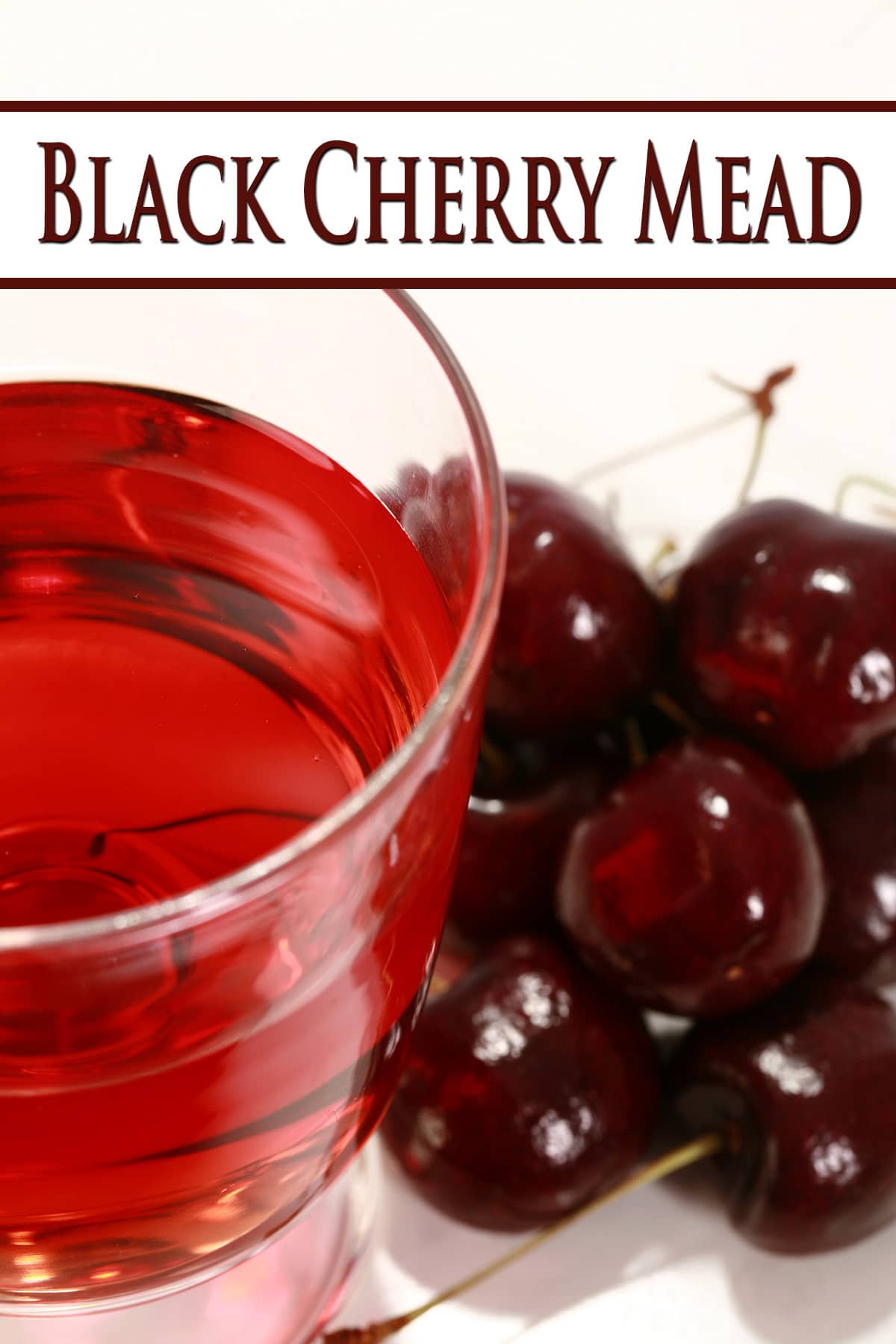
Last summer, we ended up with some extra black cherries after going on a fruit bender.
Living here in Hamilton - kind of in a “Fruit belt” - has spoiled us rotten when it comes to fruit. Fresh local peaches, apples, cherries, plums, pears, and more!
Anyway, during the season, it’s pretty easy to end up buying more fruit than you need, and we found ourselves staring down a big bag of black cherries that was going to go bad before we’d be able to finish it.
It wasn’t enough to put on a batch of
Cherry Wine, but it WAS enough to use for a batch of cherry mead.
IMHO, when it comes to fruit meads, there are two ways you can go:
- Fruit as the base, for basically a fruit wine that’s been fermented with honey for the sweetening
or
- Honey as the base, with *some* fruit used for a bit of accent flavour.
While we tend to do more of “fruit base”, this one is of the second type - a mead that’s been flavoured with fruit, as an accent.
It makes a bright, pretty mead that’s great as a summer drink... which is good, as it’ll be best after it’s been 8-12 months since starting the batch.
So, let’s get to it!

What is Mead?
Mead is basically a wine, but instead of being made from grape juice, it’s made from honey.
Technically, this recipe is a Black Cherry Melomel - a mead that’s been fermented with the addition of fruit - but “mead” is a much better-known term.
How to Make Black Cherry Mead
If you haven't attempted making mead before, don't be intimidated! Check out our primer to home brewing:
- Wine Making At Home, Part 1: Why?
- Wine Making at Home, Part 2: Equipment to Get Started
- Wine Making at Home, Part 3: The Brewing Process.
- Wine Making at Home, Part 4: How to Stabilize and Back Sweeten Wine
Just a small handful of entries, and you'll be good to go!
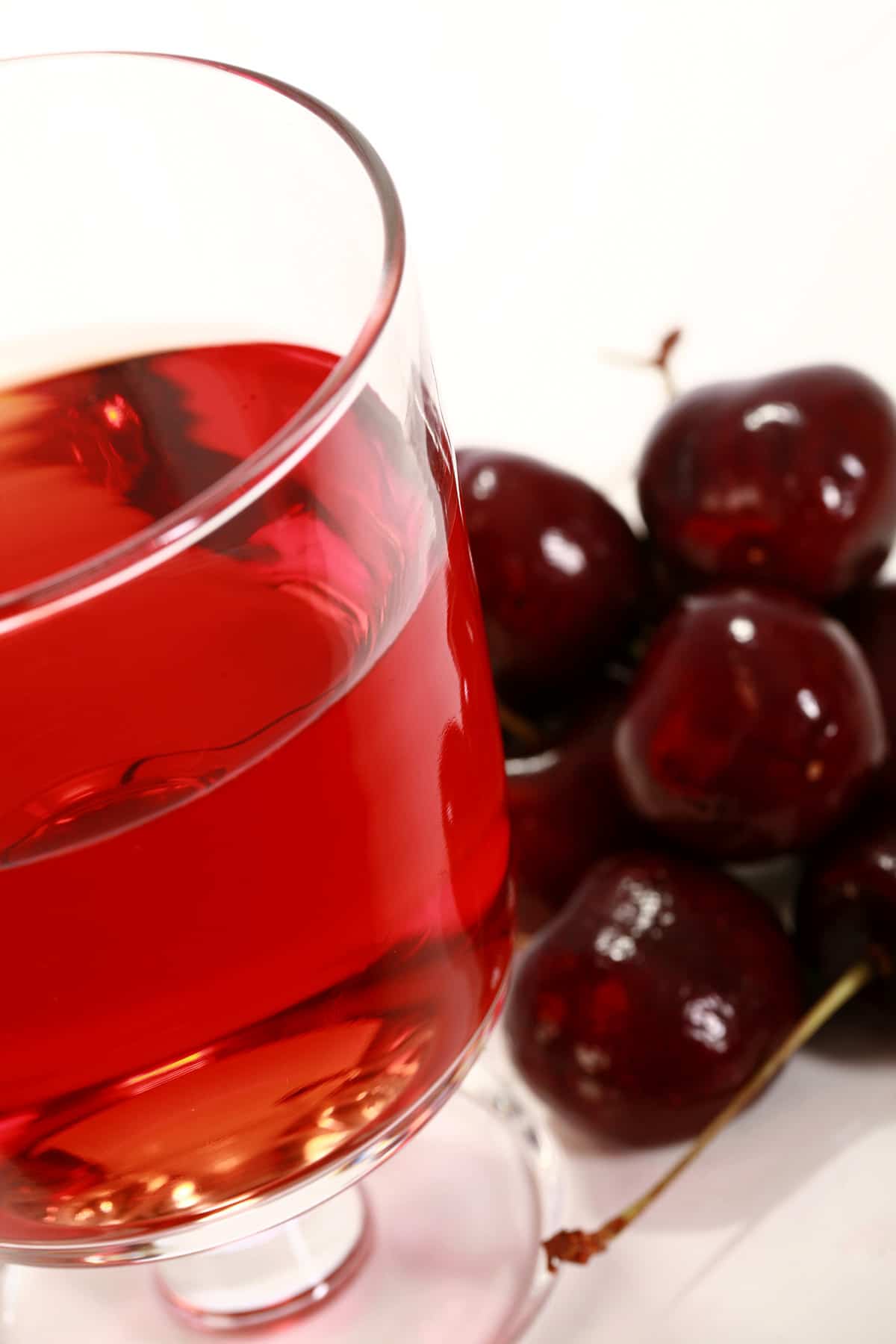
Black Cherry Mead Ingredients
This mead recipe requires only a few ingredients to make - super simple!
Here is some information about those base ingredients that you may find helpful.
The Black Cherries
You can use fresh or frozen black cherries, there are just a few differences in how to use them, and things to keep in mind:
Fresh Cherries
Using fresh, be sure to use ripe cherries, picking through to remove anything that's not ripe, is moldy, etc.
When using fresh cherries, I HIGHLY recommend getting a cherry pitter, if you don't already have them. Even if this batch of wine is the only time you'll ever be pitting cherries, it's worth the investment - makes life so much easier. This one is the model we have, I love it!
I like to chop the cherries (in a food processor) or mash them (with a potato masher), and let them sit in the honey for a couple hours before starting on the wine making.
Doing so - maceration - draws the juices out of the cherries.
Frozen Black cherries
When using frozen cherries, you can skip the maceration process.
Freezing and thawing cherries breaks them down in a way that ends up with a result similar to maceration.
The Honey
Type of Honey
I recommend picking something lightly colored and lightly flavoured - a clover or orange blossom honey, for instance.
Something like a wildflower or buckwheat honey is likely to completely overwhelm the flavour from the fruit.

Alcohol Content
Aside from flavour, there’s the matter of alcohol content.
Your mead’s final ABV will vary wildly dependent on a couple of main things: How much honey you use, and what kind of yeast you use (more on that in a bit)
Sugar - in this case, the sugars from the honey - is what feeds the yeast. Yeast eats up the sugars, and gives off alcohol as the byproduct of that process.
More honey = more food = more alcohol... to a point, anyway. About that...
Yeast
The type of yeast you use will impact the alcohol content of the final product.
Yeast organisms don’t have an *unlimited* capacity to process sugar into alcohol. At some point, the environment they’re living in - the brewing mead - becomes too high in alcohol for the yeast to survive. They die off, the fermentation stops.
Different types of yeast have different tolerances for alcohol in the environment. That is, some yeast will be able to survive higher amounts of alcohol in the mead, so they’ll continue producing it longer than some other types.
Some types of yeast will bring you to something like an 8% ABV, while others will let things run wild until close to 20% ABV.
It’s good to know what you have in mind, when you choose your yeast.
If you want a sweet mead with a low-ish ABV - without having to back sweeten it (more on that in a bit) - choose a yeast with a lower tolerance for alcohol.
If you’re looking for a dry mead with a low ABV, choose a yeast with a lower tolerance for alcohol, and don’t use a ton of sugar.
If you want a sweet mead with a high ABV, use a bunch of sugar with a high-tolerance yeast... and be prepared to backsweeten it.
If you want a dry mead with a high ABV, use a fair amount of sugar and a high tolerance yeast.
We generally use a sweet mead yeast with this, and don’t end up needing to back sweeten it. Your mileage
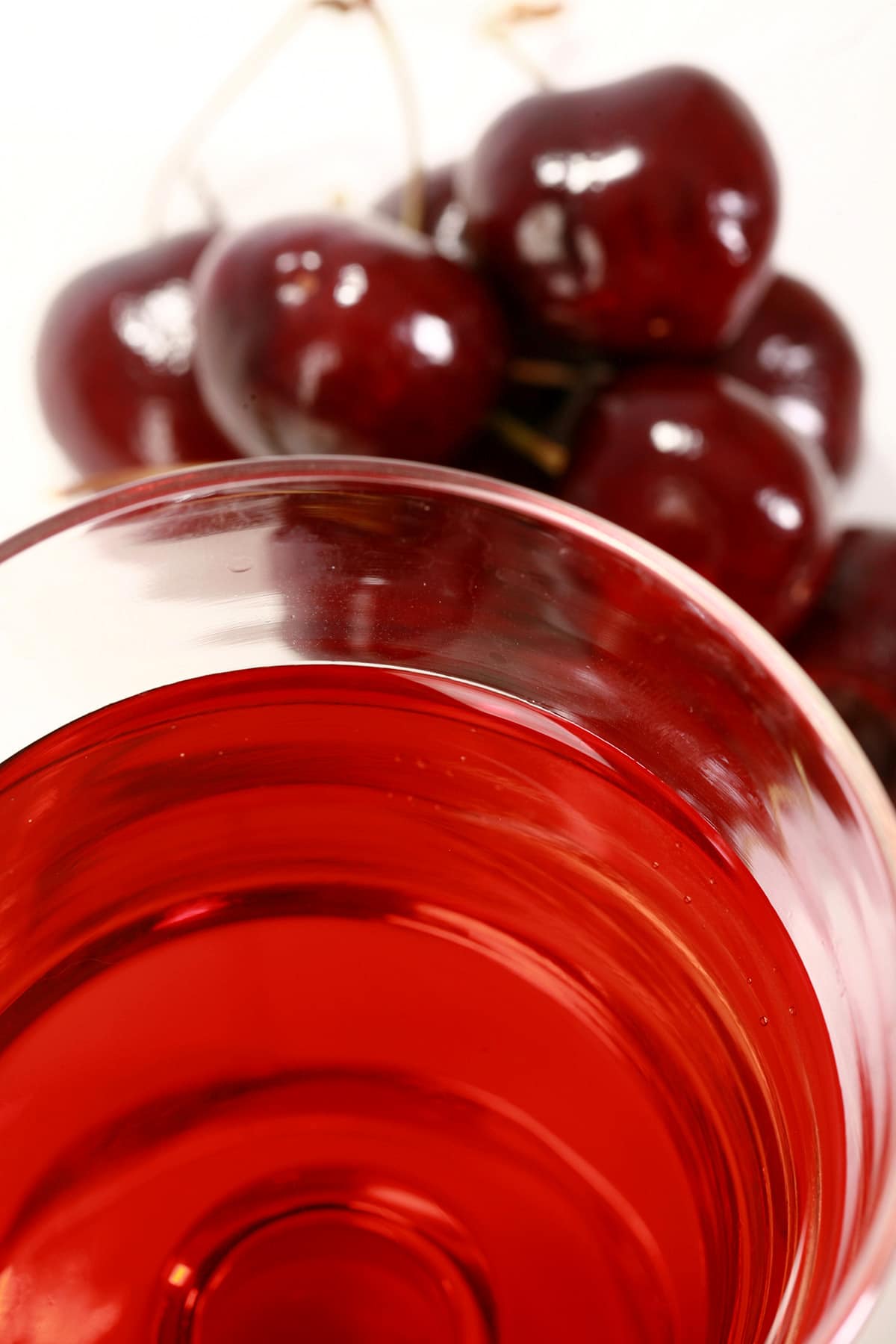
Spring Water
While using tap water can be an option, in the past we’ve opted to use jugs of spring water, for a couple of reasons..
First of all, life in Minneapolis opened our eyes to the fact that tap water doesn’t always taste good.
While our water here in Hamilton always tastes fresh and clean (without a filter even!), we know that’s not the case for everyone.
Bottled spring water won’t introduce any weird, undesirable flavours to your mead.
Additionally, there’s the convenience factor. Not only is it clean tasting, it’s pre-measured, sterile, and handy.
However, if your tap water is consistently tasty and safe, feel free to use that instead of bottled.
Everything Else
Everything else in this recipe is technically optional, but contributes to it finishing as a well balanced wine. These ingredients include:
Acid Blend, Tannin - Balances and rounds out the flavours.
Pectic Enzyme - Breaks down fruit, especially as it relates to preventing “haze” from the pectins.
Yeast Nutrient - Gives a boost to the yeast.

Back Sweetening Your Homemade Black Cherry Mead
As with the rest of my wines, I prefer this mead to be sweet - having residual sugar brings out the cherry flavour!
Sometimes - usually, even - you’ll find that the yeast went a bit too far with their smorgasbord, and you end up with a Cherry Mead that is not as sweet as you’d like it.
... and that’s when you back sweeten it!
You can read my How to Stabilize and Back Sweeten Wine post for information on how to back sweeten it.
Making Larger Batches of Mead
As a note, you can easily scale this mead recipe up - in fact, there's a function inside the recipe card itself to do the math for you!
One note, though: You don't need to multiply the yeast, but the software doesn't know that. We will use one pouch of yeast for anything from 1-5x batches, and then 1 pouch for every 5x batches beyond that.
As a related note: The recipe software is definitely geared towards cooking, not wine making. Therefore, you can pretty much ignore all of the info it gives you: The nutritional info is calculated on everything that goes into the mead.
It does not take into account how much sugar will be fermented out, how much volume is lost to racking, etc.
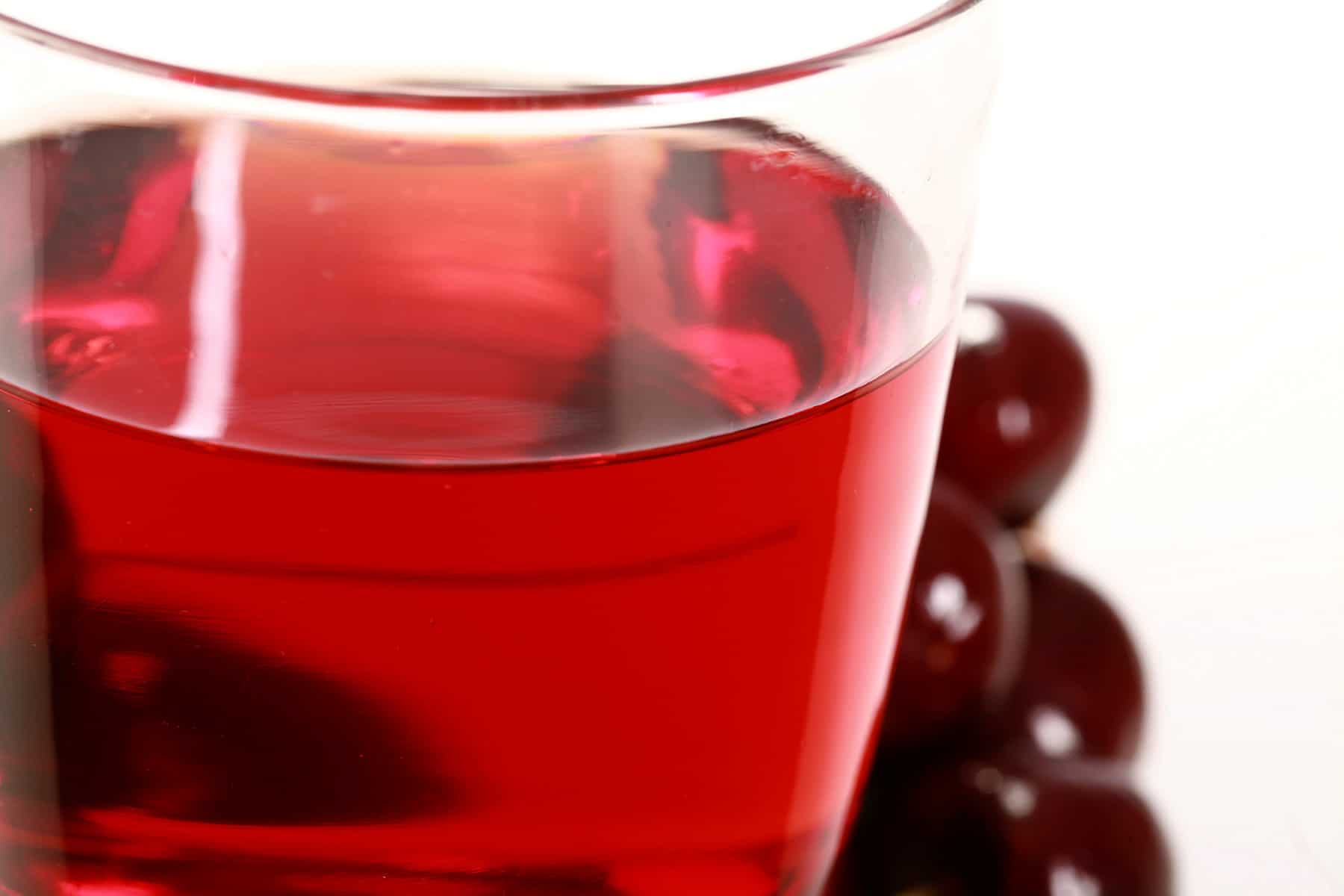
How to Make Sparkling Black Cherry Mead
Mead is especially nice as a bubbly beverage - it tastes festive and celebratory! There are two main ways to accomplish this, both of which happen AFTER fermentation has ceased.
Note: Consult your local homebrew store for what your options are when it comes to bottling sparkling wine. As this ferments a bit in the bottle, normal wine bottles aren’t a good idea - they can explode from the extra pressure.
We’ll usually use beer bottle and caps for any sparkling wine or sparkling ciders that we make, but there are options more along the lines of champagne bottles. Selection and brands tend to vary wildly by location.
Anyway!
For Naturally Carbonated Sparkling Black Cherry Mead
For this method, you need to skip the stabilization step.
Once your mead is ready to bottle, prepare your honey syrup:
In a small pot, mix together 1 cup of water with 1 cup of honey. Use a sanitized funnel to pour this into a sanitized large carboy.
Rack the mead over into this carboy, swirling it as you go.
Bottle the wine into appropriate bottles, following directions for whatever kind of cap/closure you will be using.
Allow mead to age at least a month or two – residual yeast will ferment the added sugar, carbonating the mead. Serve chilled.
For Force-Carbonated Sparkling Mead
Alternatively, you can rack the mead (without the added honey syrup!) into a keg and force carbonate it, if you have the set up for that - That’s what we tend to do with our ciders.
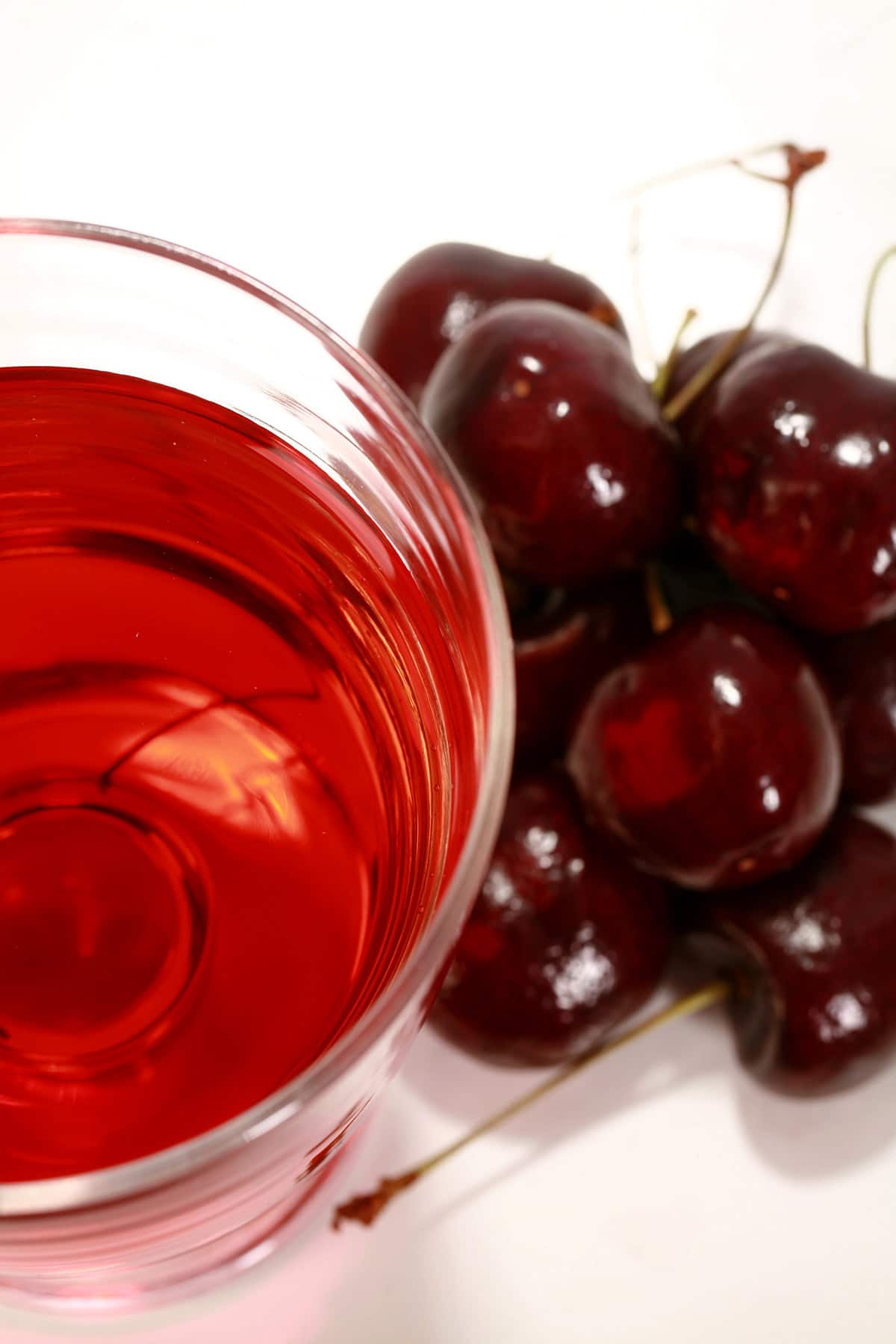
More Home Brewing Recipes!
While you've got your current homebrew fermenting away, why not consider putting a batch of something else on, to occupy your wait time? Here are a few of my other wine, cider, and mead recipes:
Wine Recipes
Banana Wine Recipe
Blackberry Wine Recipe
Blackcurrant Wine Recipe
Blueberry Wine Recipe
Cranberry Clementine Christmas Wine Recipe
Cranberry Wine Recipe
Faux Lingonberry Wine
Lychee Wine Recipe
Mango Strawberry Wine Recipe
Mango Wine Recipe
Mint Wine Recipe
Lychee Wine Recipe
Partridgeberry Wine Recipe
Passionfruit Wine Recipe
Peach Wine Recipe
Stone Fruit Wine Recipe
Strawberry Wine Recipe
Ube Wine Recipe
Watermelon Wine Recipe
Mead Recipes
Blueberry-Clementine Mead Recipe
Blueberry Mead Recipe
Clementine Mead Recipe
Pumpkin Mead Recipe
Wildflower Mead Recipe
Cider & Miscellaneous Homebrew Recipes
Hard Apple Cider Recipe
Home Brew Hard Iced Tea Recipe
Maple Hard Apple Cider Recipe
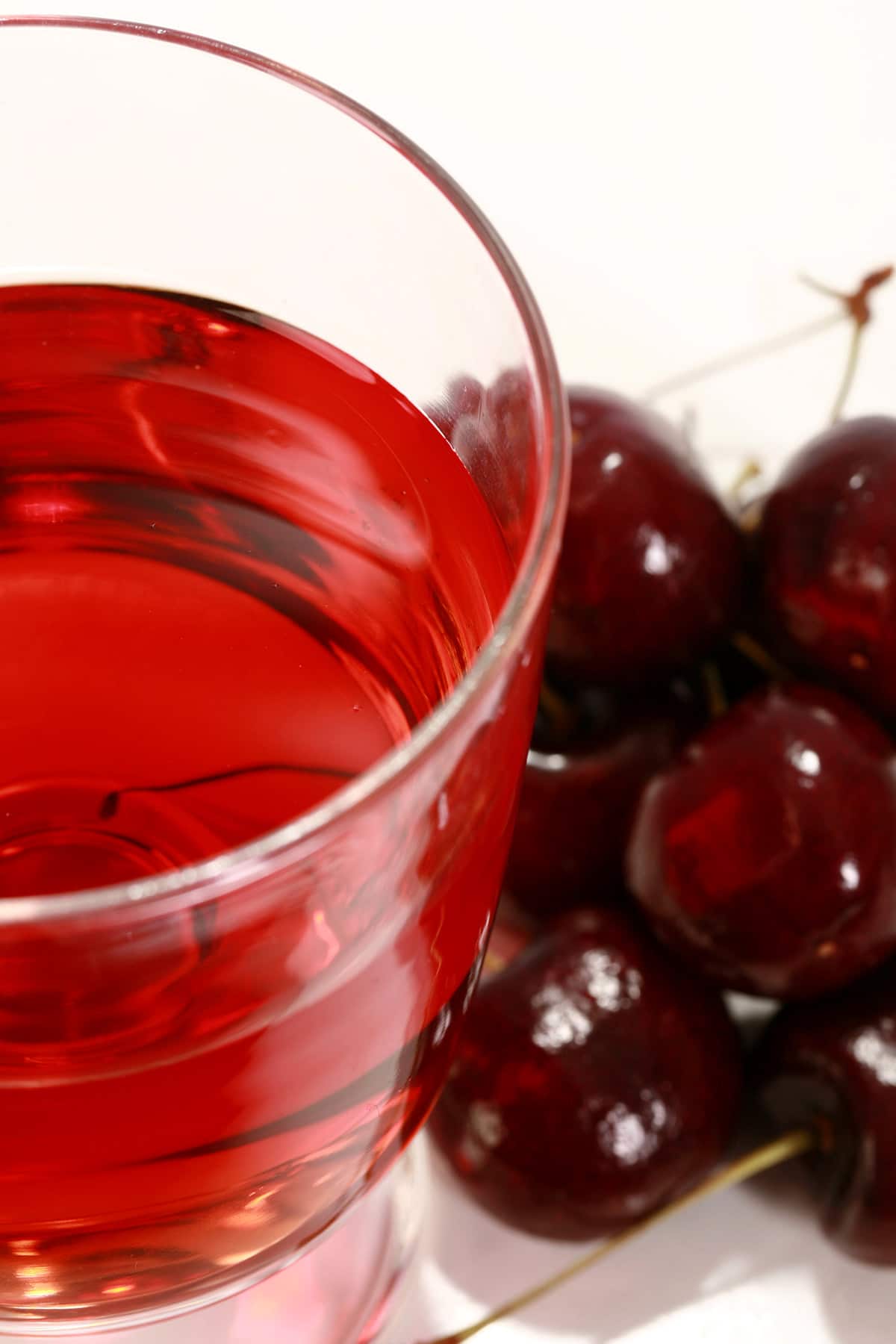
Share the Love!
Before you chow down, be sure to take some pics of your handiwork! If you post it to Bluesky, be sure to tag us - @CelebrationGen. We're also on Pinterest, so you can save all your favourite recipes to a board!
Also, be sure to subscribe to my free monthly email newsletter, so you never miss out on any of my nonsense.
Well, the published nonsense, anyway!
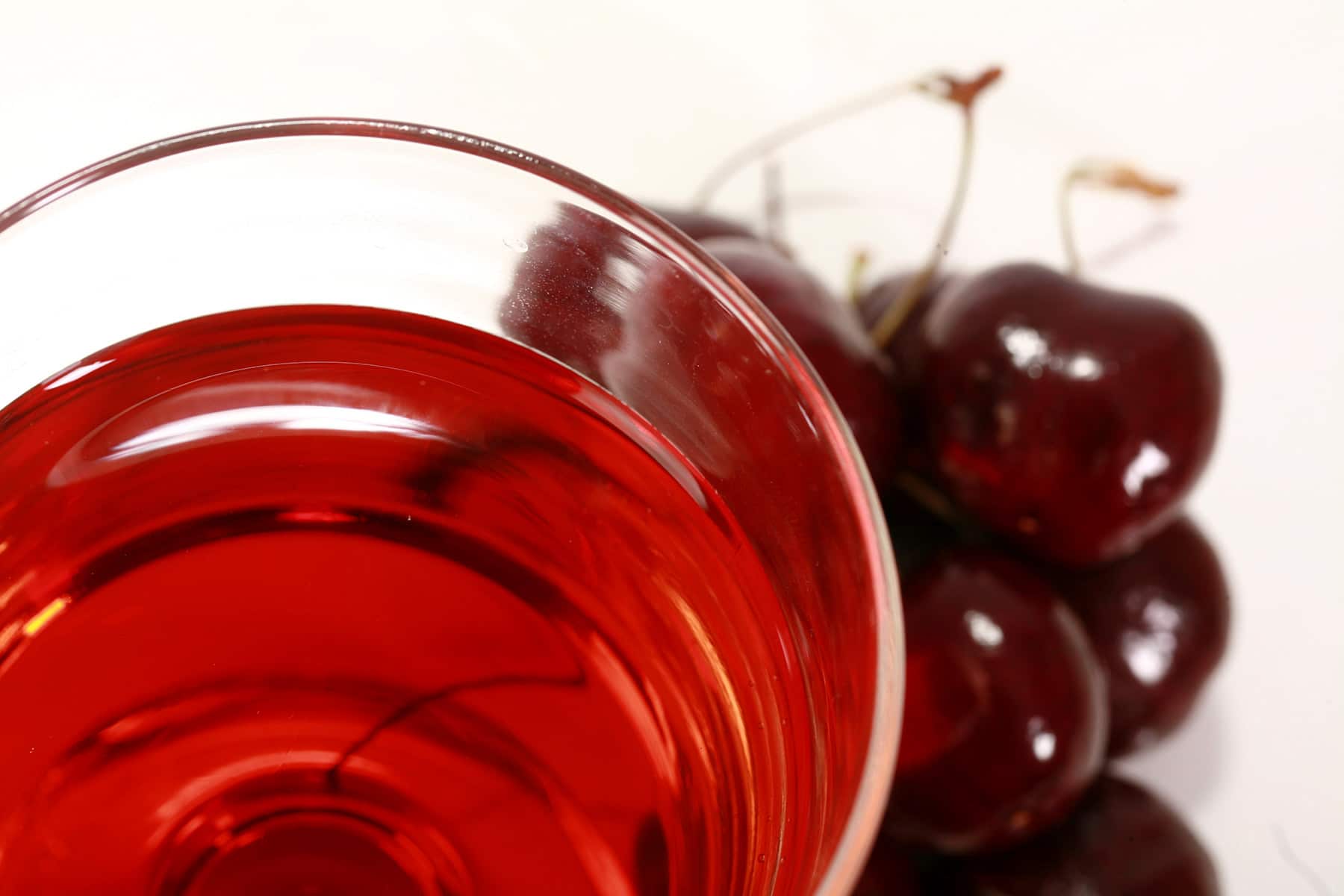
Homemade Black Cherry Mead
Equipment
- 2 gallon fermenter bucket and lid
- 1 air lock and stopper
- Siphon, siphon tubing.
- 1 - 2 1 gallon glass carboys
Ingredients
- 1.5 lb Fresh or frozen Black Cherries*
- 3 lbs Honey
- 1 gallon Water
- 1 teaspoon Yeast nutrient
- ½ teaspoon Pectic Enzyme
- ¼ teaspoon Acid blend
- Yeast We used Lalvin EC-1118
- Wine stabilizer of choice
Instructions
- If using fresh cherries, rinse and pick through them, removing any that are moldy, etc. Remove stems, chop them up.
- Place in a large pot, along with the honey. Using a potato masher or VERY clean hands, stir and mash cherries. Let sit for an hour.
- Add water, stir well. Heat to ALMOST boiling, then simmer gently for 30 minutes.
- Stir in yeast nutrient, pectic enzyme, and acid blend
- Pour mixture into a freshly sanitized fermenting bucket. Cover with sanitized lid and air lock, allow to cool to room temperature (overnight).
- The next morning, give the mixture a quick stir with a long, sanitized spoon, and – using sanitized equipment – take a gravity reading of the liquid (strain out any cherries). Keep track of the number! (This is an optional step, but will allow you to calculate your final ABV %)
- Sprinkle yeast into fermenter, cover with sanitized cover and air lock. Within 48 hours, you should notice fermentation activity – bubbles in the airlock, carbonation and /or swirling in the mead must. This means you’re good to go!
- After a week or so, use your sanitized siphon setup to rack the must into a freshly sanitized carboy. Put the carboy somewhere cool (not cold!), and leave it alone for a month or so.
- Using sanitized equipment, rack the mead off the sediment, into a clean, freshly sanitized carboy. Cap with sanitized airlock, leave it alone for another 2-3 months.
- Rack one more time, leave it for another 3 months or so.
- When your mead has been racked a few times and shows NO more fermenting activity for a month or so (no bubbles in the airlock, no more sediment being produced, you can move on to bottling. **
- If stabilizing, follow the instructions on your selected type of wine stabilizer to stop fermentation. For potassium sorbate, this needs to be done 2-3 days before bottling.
- Back sweetened your mead, if desired. (See post for details)
- Using sanitized equipment, take a gravity reading, then rack the mead into clean, sanitized bottles. Cork.






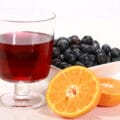




hill climb racing 2 mod
I loved reading about your Black Cherry Mead recipe! The combination of flavors sounds absolutely delicious, and I appreciate the detailed instructions. Can't wait to try this at home for our next gathering. The tips on fermentation are especially helpful—thanks for sharing your expertise!